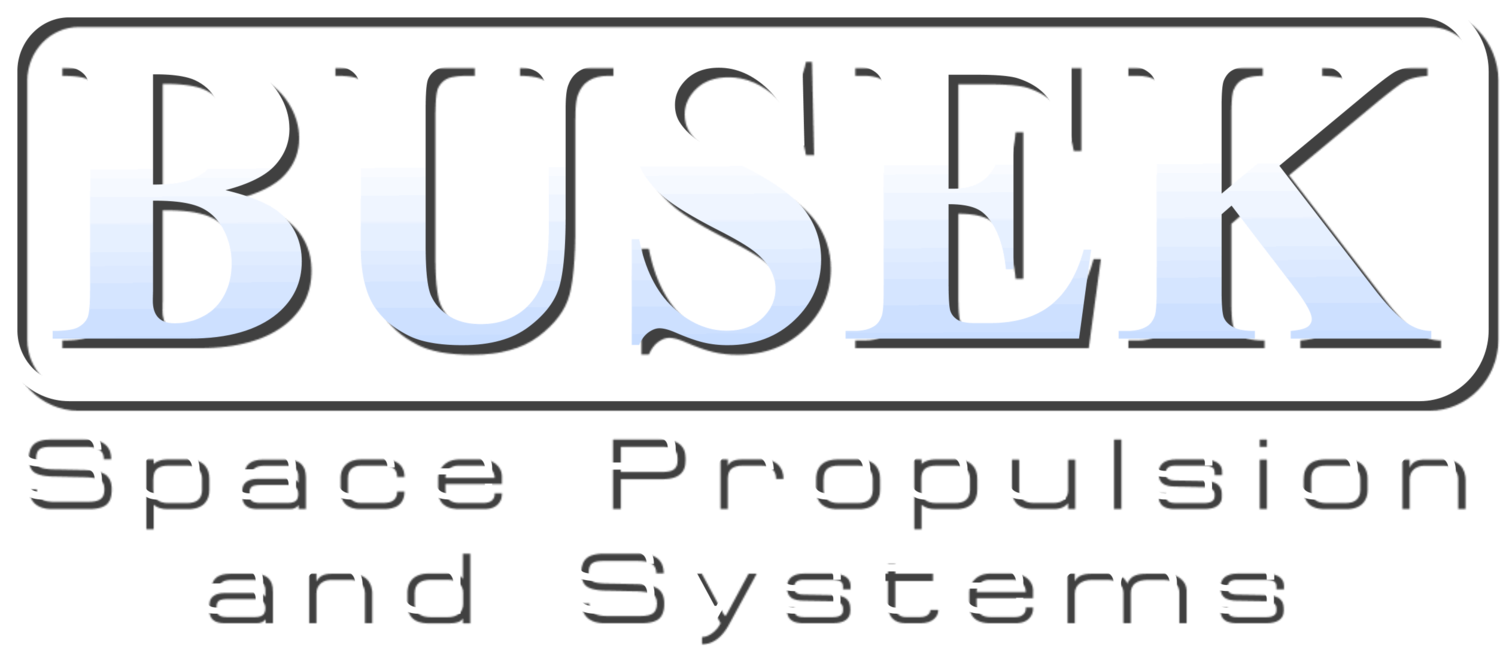
ELECTROSPRAY THRUSTERS
Enabling unique missions in space-based science, from detecting gravity waves to stabilizing large observatories.
BET-MAX Electrospray Thruster System
Ultra-precision, highly throttleable electric propulsion with integrated propellant delivery system. High impulse and high thrust configurations available.
System Power: 12 W - 14 W (24 W max)
Propellant: Ionic Liquid
Thrust: <1uN-150uN range per thruster
Thrust Noise: <0.2uN/rtHz
Specific Impulse: 850 seconds - 2300 seconds
Why use Electrospray thrusters?
Electrospray thrusters are characterized by precise thrust control (on the order of nano-Newtons) and extremely efficient operation (over 80%). This makes them the superior solution for ultra-precise spacecraft pointing, with pointing accuracy exceed that of reaction wheels alone by ~2 orders of magnitude.
“When DRS [Disturbance Reduction System] is active, [spacecraft] position noise is comparable to the diameter of a DNA Helix (2 nm) [1]”
High Precision Performance and High Heritage – Independent control of beam voltage and current leads to precise, low noise thrust – Ultimate performance and physics based thrust model has been validated on orbit. [1]
Low, Steady Power – Cluster of 4 thrusters on ST7 / LPF used ~20 W with only ~0.2 W dependent on thrust – Thrusters are thermally stable and have their own proportional controlled heater.
Known Spacecraft Interactions – Well defined and predictable exhaust plume (<35°) with no S/C charging concerns – No magnetic materials are required and mass distribution is predictable over time.
Since 1998, Busek has been a recognized leader in the field of electrospray physics. This leadership was solidified when NASA’s Jet Propulsion Laboratory’s awarded Busek the development of the world’s first flight qualified electrospray thruster systems. This system included custom power management, digital control interface and propellant storage and management systems.
The extreme precision (equivalent to the weight of a mosquito antenna) required the development of new miniature valves capable of withstanding extreme performance requirements, in addition to a novel propellant-less carbon nanotube cathode. Since delivering the flight flight hardware to JPL in 2008, Busek has been continuing its effort to result in a new class of miniature, high performance electrospray propulsion for demanding missions requiring precision pointing, formation flight, and occultation. [1]
[1] Electric Propulsion Microthrusters for Spacecraft Precision Pointing and Attitude Control. John Ziemer, Colleen Marrese-Reading, Steven Arestie, NASA JPL, Caltech; Nathaniel Demmons, Busek Co. Inc.; Prof. Richard Wirz and Dr. Adam Collins, UCLA and Prof. Manuel Gamero, UCI along with Student Teams ST7-DRS and LISA Pathfinder Teams, NASA JPL & GSFC, ESA & Airbus
NASA Engineering & Safety Center (NESC) Academy Presentation December 3, 2020, with Guidance, Navigation and Control Group
https://nescacademy.nasa.gov/downloadFile/1036/

LISA PATHFINDER
FIRST FLIGHT ELECTROSPRAY THRUSTER- LAUNCHED 2015
In 2008 Busek delivered to NASA’s JPL eight electrospray thrusters clusters for the NASA/ESA LISA Pathfinder mission, ST7. This technology demonstration mission has been undertaken to prepare for the Laser Interferometry Space Antenna (LISA), which is a gravity wave observatory. Albert Einstein predicted the existence of gravitational waves - ripples in space and time - in 1915, occuring as the result of events such as closely-orbiting binaries, black hole mergers and the aftermath of the Big Bang.
In order to measure gravity waves, the satellites must be in a completely noise-free environment - even the solar pressure from the sun must be eliminated. The purpose of the Busek Electrospray Thrusters is to counteract small (micro-Newton) disturbance forces in a very precise manner (requiring precision on the order of 100 nano-Newtons). The culmination of a 6-year development effort, with its genesis as a Phase 1 SBIR (JPL), the Electrospray Thruster Clusters consist of complete systems of thrusters, feed systems, propellant storage, power electronics, and digital control interface unit.
LISA Pathfinder launched from Kourou in December of 2015 and all electrospray thruster units were successfully commissions in January 2016, after having been stored, fully fueled for nearly eight years. After reaching Earth-Sun Lagrange Point 1, the thrusters accumulated an average of 2,500 hours operation each and met 100% of mission goals.
In recognition of this ground-breaking technical effort, Busek received the 2008 paper of the year award by the AIAA Joint Propulsion Conference Electric Propulsion Technical Committee. The AIAA also awarded Busek a 2017 Electric Propulsion Outstanding Acheivement Award for the successful flight demonstration of a micro-Newton colloid electrospray propulsion system on the LISA Pathfinder spacecraft. NASA awarded Busek’s Founder Dr. Vlad Hruby the Exceptional Public Achievement Medal in 2017 for Busek’s contributions to the successful mission.
The technology and its derivatives have as direction applications in deep-space laser communications, formation-flight, star-shades and sun-shades, and propulsive ACS.




